From the Zeugma Mosaic Museum, where mosaic art dazzles, to the Coppersmiths' Bazaar, which smells of history, there are countless beauties to discover in Gaziantep. Are you ready to plan a full trip from natural beauties to historical places, from shopping spots to museums? Here are the most special places to visit in Gaziantep!
Zeugma Ancient City
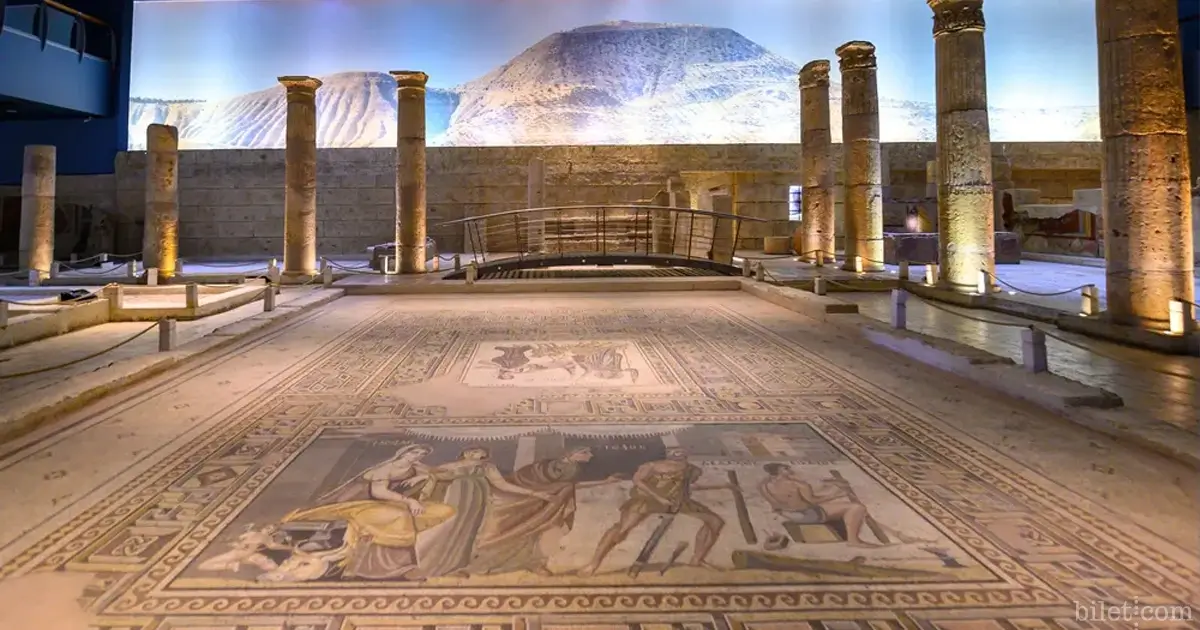
Located in the historical lands of Gaziantep, the ancient city of Zeugma is not only an archaeological site, but also a unique cultural treasure where you can connect with the past. One of the most important cities of the Roman period, Zeugma was the center of trade, art and culture with its strategic location on the banks of the Euphrates River. With its world-famous “Gypsy Girl” mosaic and eye-catching ruins, this ancient city offers its visitors the opportunity to discover traces of the past.
Zeugma Ancient City: On the Trail of History and Art
Located in the historical lands of Gaziantep, the ancient city of Zeugma is not only an archaeological site, but also a unique cultural treasure where you can connect with the past. One of the most important cities of the Roman period, Zeugma was the center of trade, art and culture with its strategic location on the banks of the Euphrates River.With its world-famous “Gypsy Girl” mosaic and eye-catching ruins, this ancient city offers visitors the opportunity to discover traces of the past. So, what is the story of Zeugma and what can you see here? Here are the details!
History and Importance of Zeugma
Zeugma was founded in the 300s BC by Seleucus I Nikator, one of Alexander the Great's generals, and became a major trading city during the Roman period. Known for the bridge over the Euphrates River in ancient times, the city was an important crossing point connecting the east and the west.The Unique Mosaics of Zeugma
The ancient city of Zeugma is world famous for its mosaics that have survived to the present day. Decorated with mythological figures, scenes from daily life and artistic details, the mosaics represent the pinnacle of Roman art. The “Gypsy Girl” mosaic in particular has become the symbol of Zeugma.Zeugma Mosaic Museum
Most of the artifacts excavated from Zeugma are exhibited in the Zeugma Mosaic Museum in Gaziantep. This museum is one of the largest mosaic museums in the world and reveals the magnificence of the ancient city.Gaziantep Castle
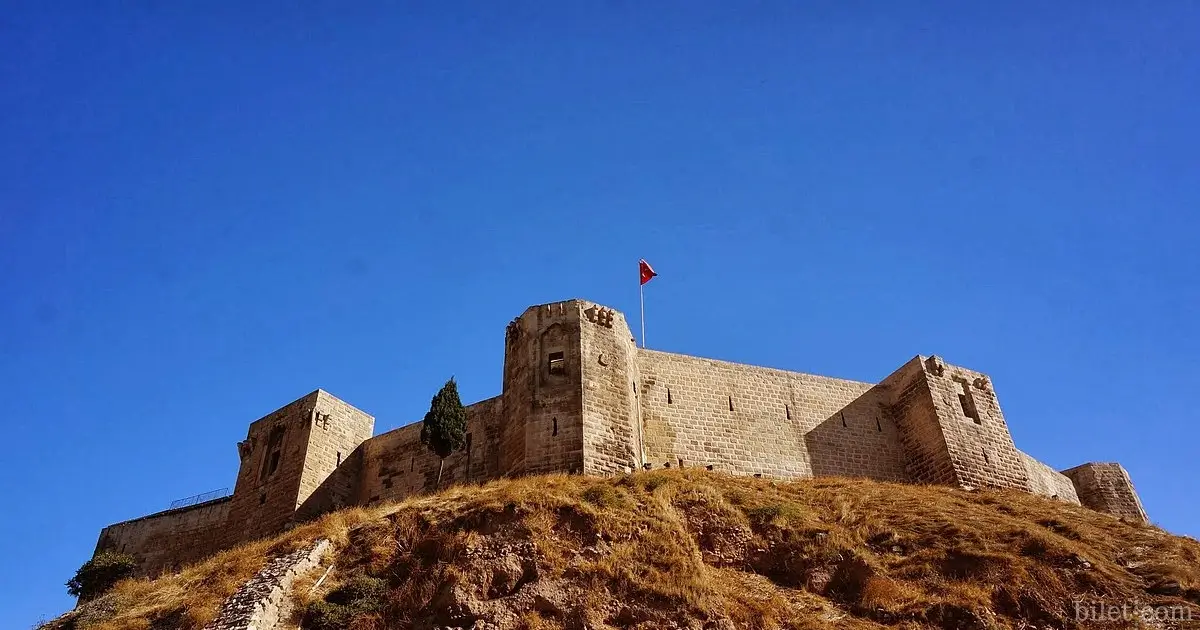
Gaziantep Castle, one of the symbols of Gaziantep, is a structure that fascinates its visitors with its historical texture. Located on a dominant hill in the city center, the castle draws attention with its deep-rooted history and strategic importance. Used as a watchtower during the Roman period in the 2nd century BC, the castle was expanded over time and took on its current appearance. This impressive structure, which has witnessed many civilizations, also bears the traces of the heroic struggle of the people of Antep in the War of Independence.
History of Gaziantep Castle
The history of Gaziantep Castle dates back to the Roman Empire. Originally built as a watchtower, the castle was expanded during the Byzantine period and transformed into a solid defense line. The castle, which was strengthened with various additions during the Ottoman period, still stands today, defying history.Heroism of the War of Independence and the Castle
Gaziantep Castle witnessed the epic resistance of the people of Antep during the War of Independence. The "Gaziantep Defense and Heroism Panorama Museum" located in the castle tells visitors about this struggle in detail. Visuals, documents and stories bearing the traces of the war take visitors to the spirit of that period.Coppersmiths Bazaar
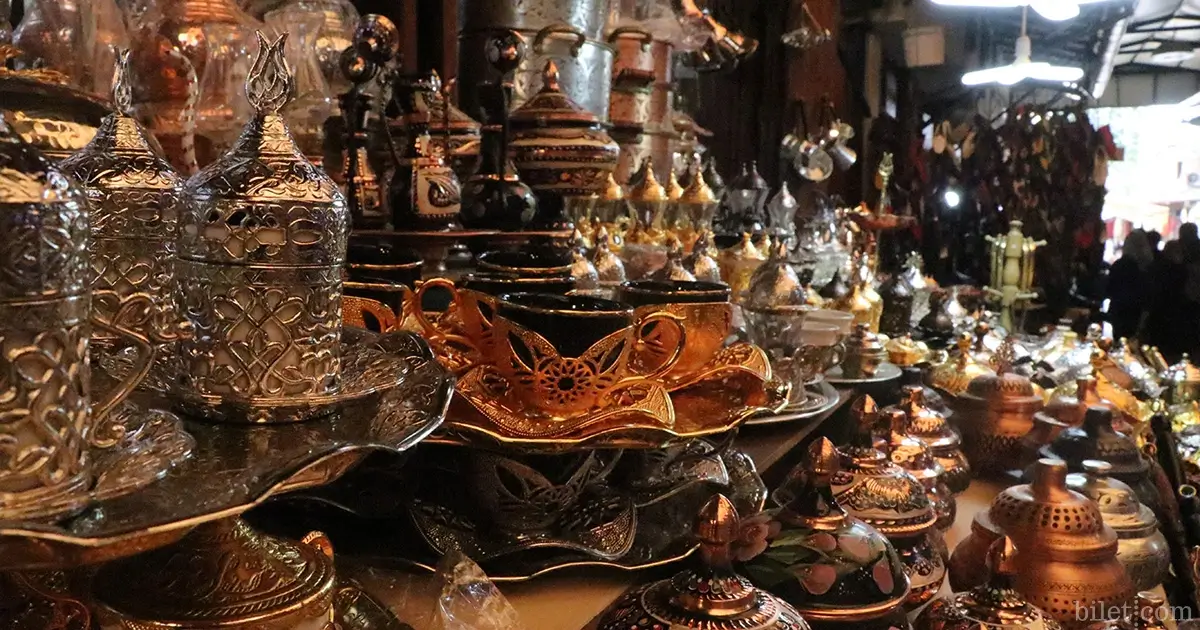
For those who want to explore the cultural richness of Gaziantep, the Coppersmiths' Bazaar is a must-visit stop. Located in the city center, this historic bazaar is famous for its coppersmithing that has survived from the Ottoman period to the present day.
While walking around the Coppersmiths Bazaar, you can feel the spirit of traditional handicrafts among the hammering sounds of the masters and enjoy this unique atmosphere. It is a perfect place to buy both handmade products and have a historical experience.
History of Coppersmiths Bazaar
Coppersmiths' Bazaar has existed for centuries as the trade center of Gaziantep. Built during the Ottoman period, this bazaar draws attention not only with its coppersmithery but also with its contribution to the commercial fabric of the city. The bazaar is a place that keeps Gaziantep's past and craftsmanship tradition alive.What Can You Find in the Coppersmiths' Bazaar?
- Handmade Copper Products : Traditional copper kitchenware such as cauldrons, pans, coffee pots, and pans.
- Ornaments : Decorative plates, motif trays and gift items.
- Works of Masters : The chance to watch coppersmithing live in the workshops of craftsmen.
- Local Flavors : Restaurants and cafes around the bazaar where you can taste the flavors of Gaziantep cuisine.
Hammam Museum
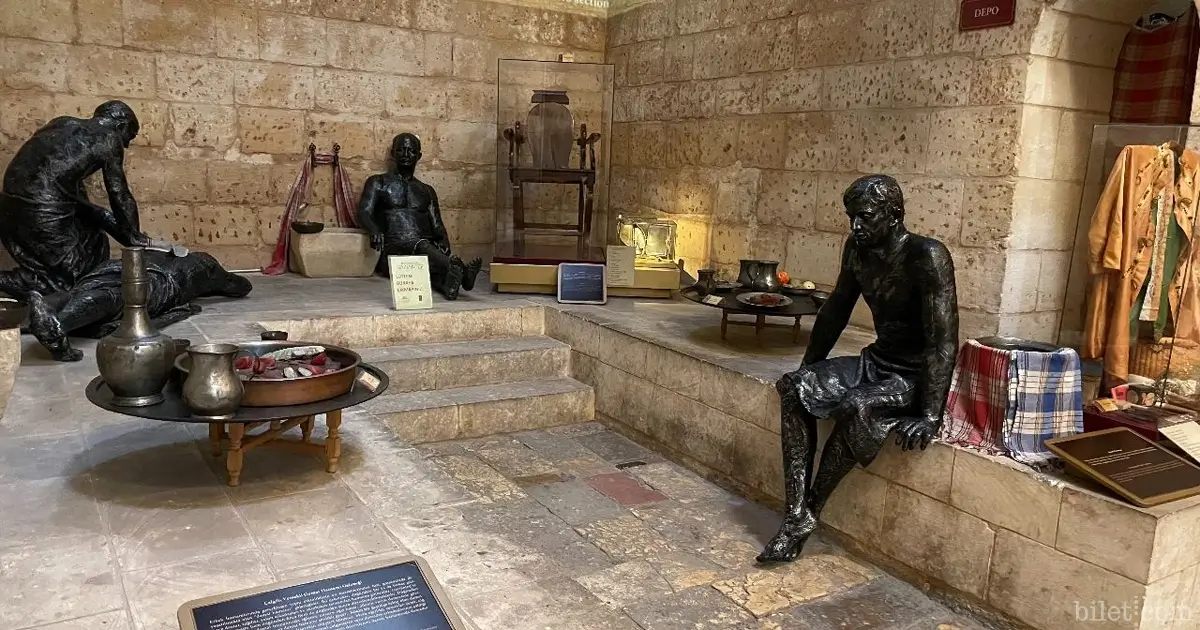
Gaziantep Hammam Museum, which sheds light on the historical and cultural heritage of Gaziantep, is a special place that reflects the traditional Turkish hammam culture. Located in the city center, this museum was opened to visitors after the restoration of a historical hammam from the Ottoman period. The Hammam Museum reveals the hammam culture, which was a part of the social life of the past, with both its architecture and the works it exhibits.
History of Gaziantep Hammam Museum
The Hamam Museum was established after the restoration of the Naib Hamam, which was built in the 16th century with Ottoman architecture. This historical hamam, which served the local people in the past, has survived to the present day as one of the most beautiful examples of traditional Turkish hamam culture. With the restoration work, the hamam was transformed into a museum and presented to visitors.Exhibitions in the Museum
Hammam Tools and Equipment: Traditional hammam items such as basins, bowls, and soap dishes.- Turkish Bath Culture : Detailed information about bath customs, materials used and traditional rituals.
- Thematic Areas : The museum displays the bath sections such as hot, cold and warm in their original form.
Rumkale
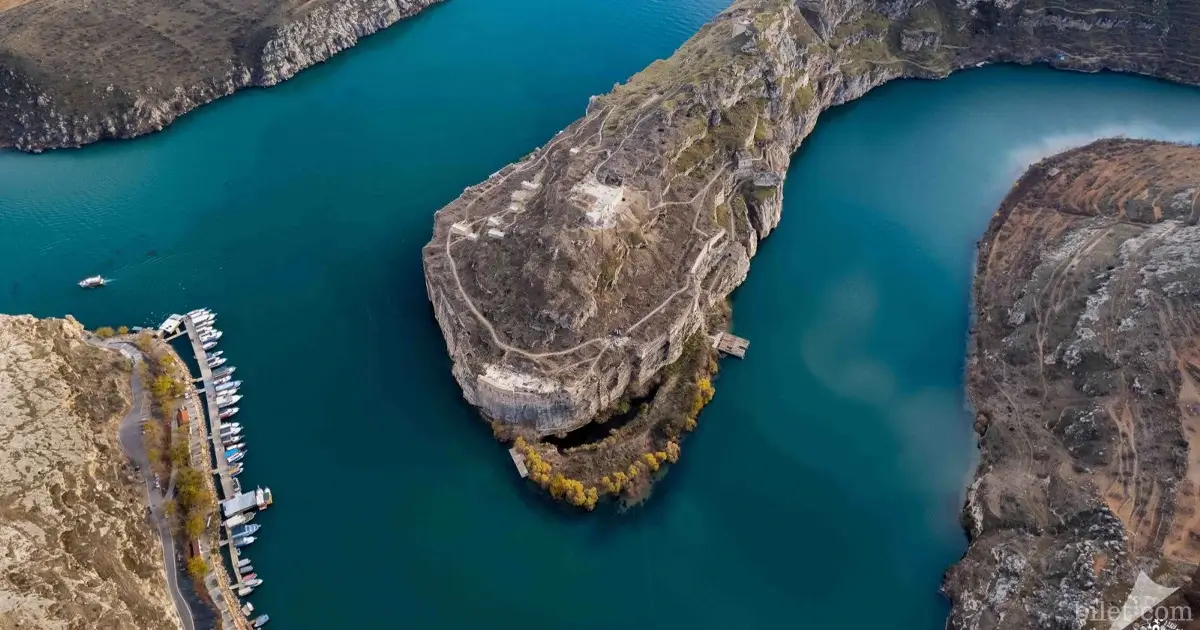
Located within the borders of the Nizip district of Gaziantep, Rumkale is a fascinating structure where history and nature intertwine, rising at the point where the Euphrates River and the Merzimen Stream meet. This impressive castle, built on a high rock, offers a unique experience to its visitors with its strategic location and historical texture. Rumkale, which has been under the rule of many civilizations in the past, is an important historical site that attracts the attention of local and foreign tourists today.
History of Rumkale
The history of Rumkale dates back to the Ancient Age. The castle, which is thought to have been first used by the Assyrians, was used as a strategic defense point by the Persians, Romans, Byzantines, Ayyubids and Ottomans. The castle, which also has an important place in terms of Christianity, is said to have been where John, one of Jesus' apostles, copied the Bible here.Things to Do in Rumkale
- Boat Tour: Boat tours on the Euphrates River to reach Rumkale are a great opportunity to discover the natural beauties of the region.
- View of the Landscape: When you climb up to the castle, you will be greeted by a fascinating view of the Euphrates. This view becomes even more impressive at sunset.
- Historical Tour : By walking around the castle, you can feel both the traces of history and the natural beauties at the same time.
Living Museum
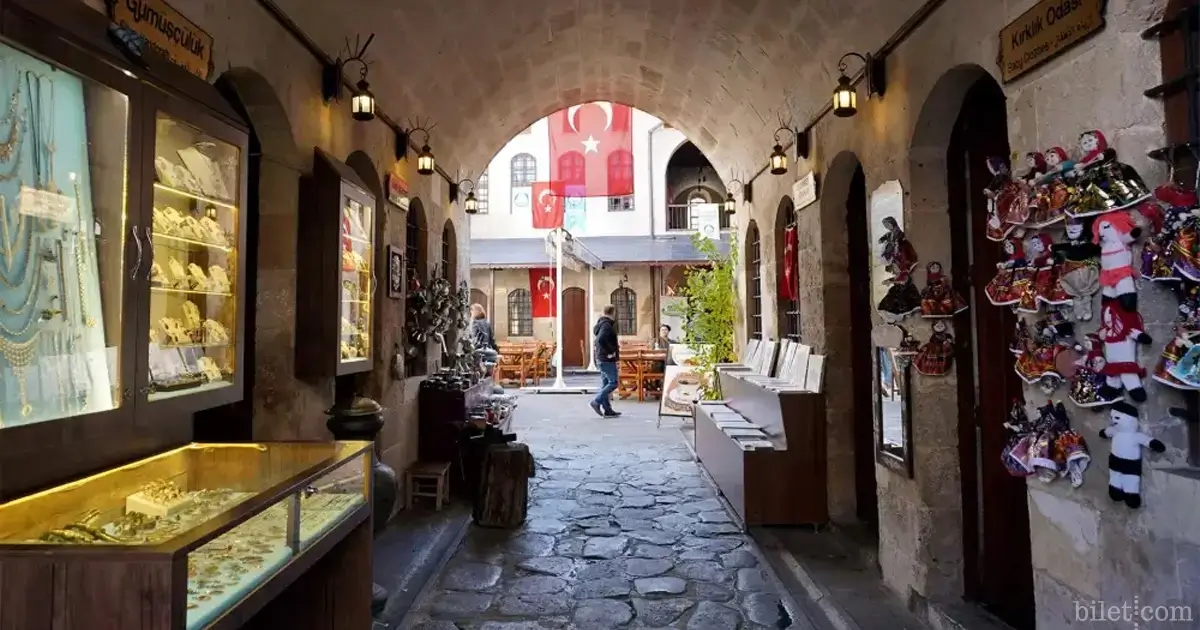
Gaziantep, in addition to being a city famous for its historical and cultural riches, offers a unique experience known as the "Living Museum". Gaziantep Living Museum attracts attention as an interactive venue that presents both the city's past and cultural heritage in a lively manner.
Here, you can see the traditional handicrafts of Gaziantep, meet the masters and learn how these crafts are made. At the same time, you will get to know the city more closely and have the opportunity to touch the historical texture of Gaziantep.
What's in the Living Museum?
- Craftsmen's Workshops : Gaziantep's famous handicrafts such as coppersmithing, filigree, tile-making and carpet-making are exhibited here by masters. Visitors can watch how each craft is made and chat with the masters.
- Folk Arts : Items such as traditional craftsmanship, handmade jewelry, clothing, and hand-woven carpets can be seen in the exhibits in the museum.
- Live Demonstrations and Workshops : The museum organizes various workshops where visitors can learn about handicrafts. In these events, participants have the chance to experience handicrafts such as coppersmithing or carpet weaving.
Living Museum Specific Events
- Craft Workshops : Participants get the opportunity to learn traditional crafts and even create their own products.
- Cultural Shows : Local folk dances, music concerts and events reflecting the city's culture are organized.
- Historical Tours : Guided tours are also available for those who want to explore the history and culture of Gaziantep more closely.
Ancient City of Carchemish
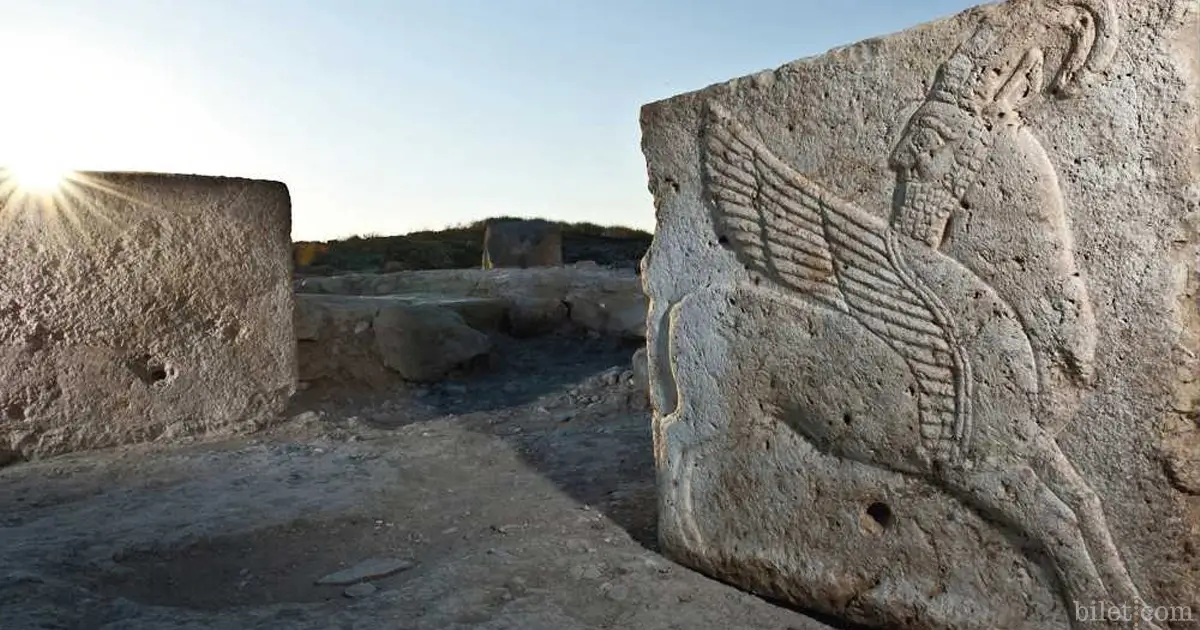
Carchemish has been a settlement since the 3rd millennium BC and is particularly famous for its ruins from the Hittite period. The Hittites used this region as an important trade center and established a great civilization here. Carchemish also came under the influence of the Persian Empire and was an important settlement during the Roman Empire.
Excavations in the region show that Carchemish has witnessed many important events throughout history and has been a center of intercultural interactions.
Prominent Structures of the Ancient City of Carchemish
- City Walls and Gates : The most striking structures of Carchemish are its very solid and impressive walls. Built for the defense of the city, these walls have been well preserved to this day.
- Temples : There are various religious structures and temples in the city. These structures provide important clues to understand the belief system and religious rituals of the period.
- Statues and Monuments : Carchemish is especially famous for its gigantic statues and monuments. These statues are important examples of Hittite and Persian art.
- Excavation Sites : Today's ongoing excavations are revealing more secrets of Carchemish. These excavation sites give visitors the opportunity to see new remains from ancient times.
Yesemek Open Air Museum
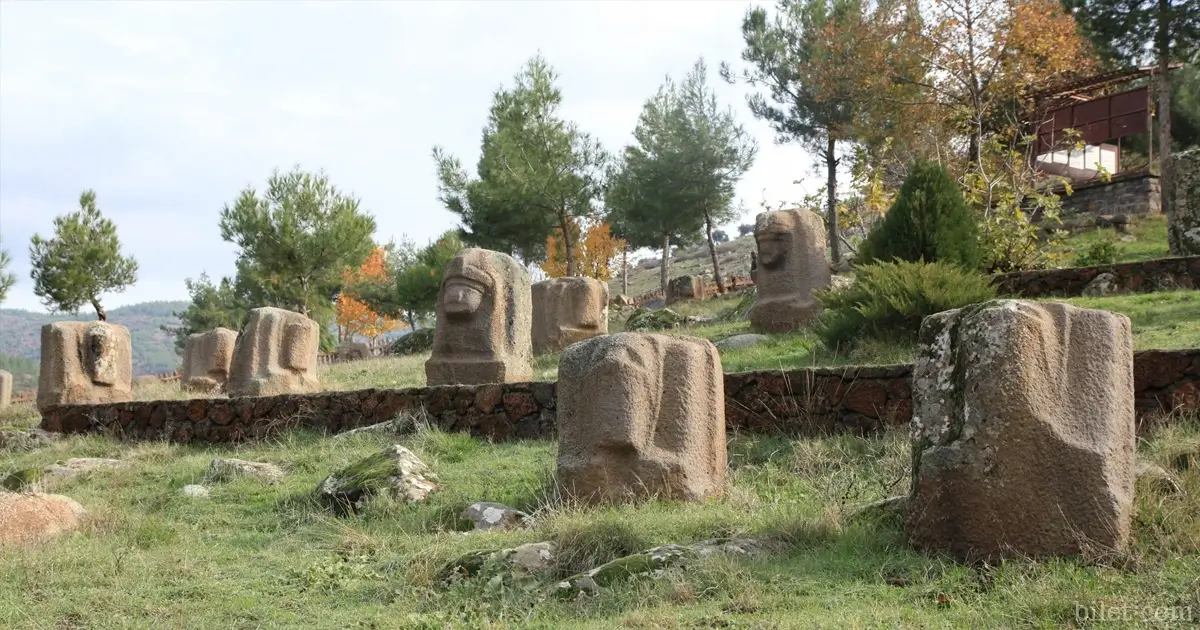
Located within the borders of Gaziantep province, Yesemek Open Air Museum is a unique place that has witnessed history as one of the oldest open-air sculpture workshops in the world. Located 8 kilometers southeast of İslahiye district, this ancient city was used as a quarry and sculpture workshop by the Hittites in the 8th century BC. Yesemek is especially famous for its large stone sculptures and figures, and these works best reflect the artistic heritage of the region.
Features of Yesemek Open Air Museum
- Stone Statues : The most striking elements in Yesemek are the statues that were extracted from the quarry and crafted with great skill. These statues provide valuable information about Hittite period art and mythological figures.
- Open Air Workshop : Most of the works were shaped on site by the masters working here. The works are also exhibited in their unfinished form, which is of great importance in understanding the sculpture making process.
- Mythological Figures : Most of the statues in Yesemek represent mythological figures or gods of the period. These figures give clues about the belief system of the Hittites.







